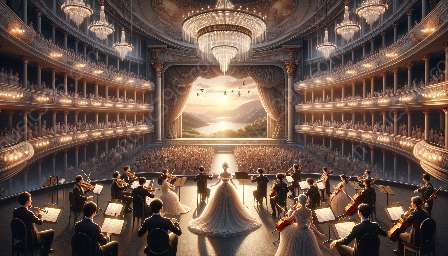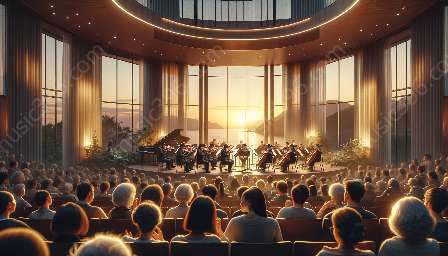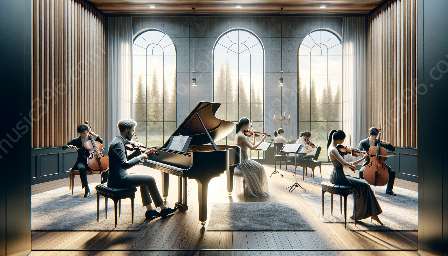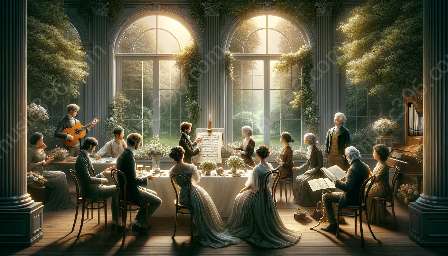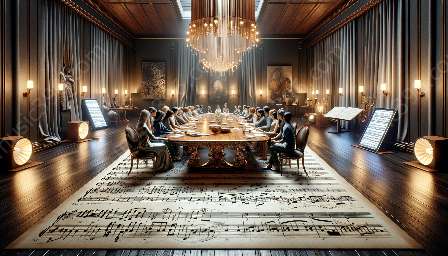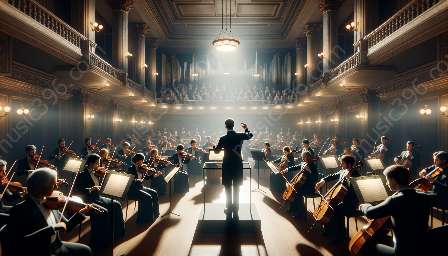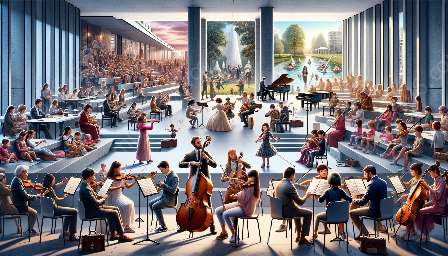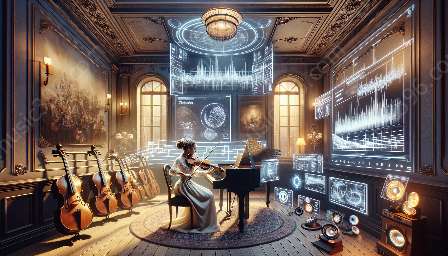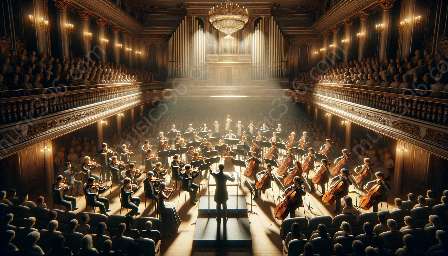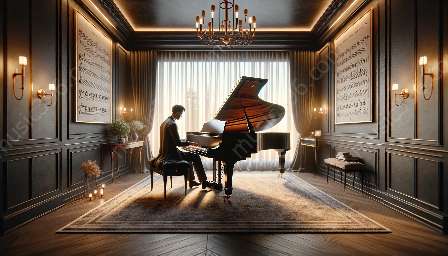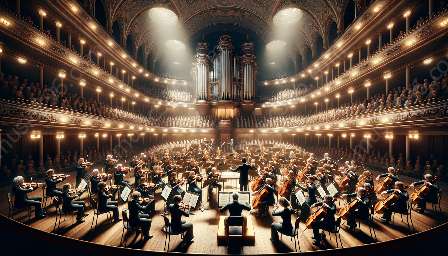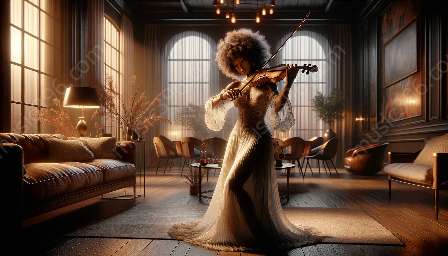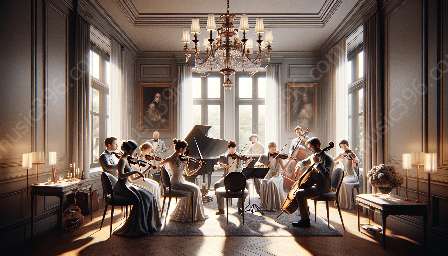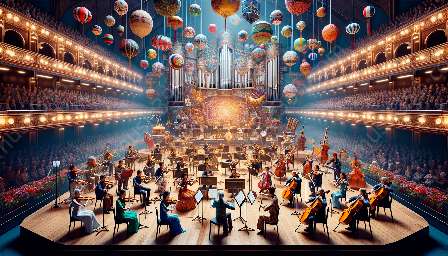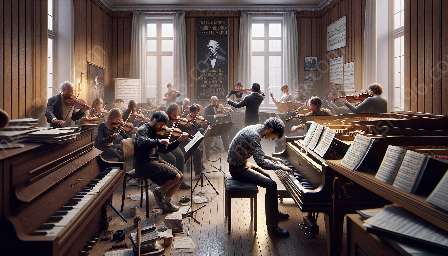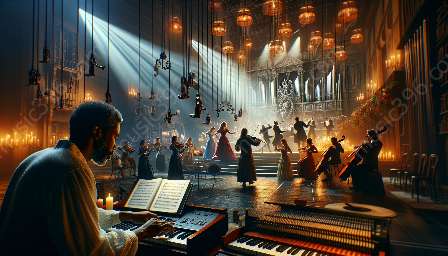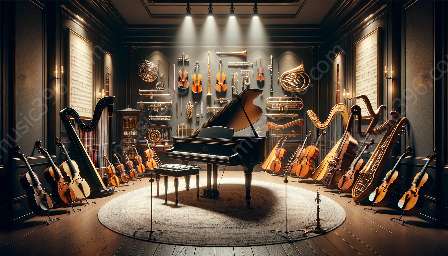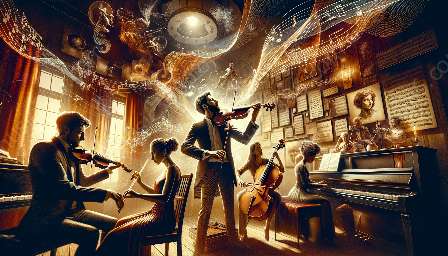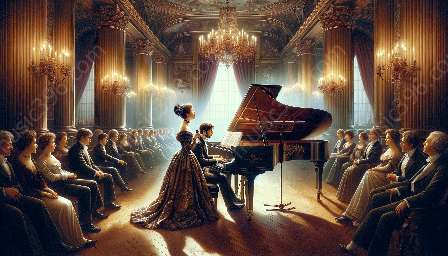A concerto grosso is a significant form within classical music and is characterized by its distinct features. In this topic cluster, we delve into the specific characteristics, techniques and skills required, and the overall impact of the concerto grosso in classical music.
The Characteristics of Concerto Grosso
Concerto grosso, a musical form popular in the Baroque period, features a small group of soloists pitted against a larger ensemble. This interplay between the soloists and the orchestra gives rise to distinctive characteristics that define the concerto grosso.
- Ritornello Form: The concerto grosso typically follows the ritornello form, where a recurring theme is presented by the whole ensemble and contrasted with solo episodes. This alternation of tutti and solo passages is a hallmark of the concerto grosso.
- Contrast and Dialogue: Central to the concerto grosso is the contrast and dialogue between the soloists and the orchestra. This dynamic interaction creates a sense of drama and tension within the musical composition.
- Instrumentation: The choice of instruments in a concerto grosso varies, but it often includes a concertino group of soloists, accompanied by a ripieno or the full ensemble. This blend of instrumental voices adds richness and complexity to the musical texture.
- Flourishing Virtuosity: The solo passages in concerto grosso compositions often showcase the virtuosity and technical prowess of the soloists. These passages demand exceptional skill and precision from the performers.
- Unity and Diversity: The concerto grosso balances the unity of the ensemble with the diversity of the soloists, creating a harmonious coexistence between the two forces within the musical structure.
Skills and Techniques in Performing Concerto Grosso
Mastering the concerto grosso requires a deep understanding of classical music skills and techniques, along with a high level of musicianship. The following skills and techniques are essential for performing a concerto grosso:
- Ensemble Playing: Musicians must possess the ability to play in sync with the ensemble, maintaining a cohesive and unified sound throughout the performance.
- Interplay and Communication: Soloists must excel in communicating and interacting with the orchestra, responding to the musical dialogue and contributing to the overall narrative of the piece.
- Expressive Performance: Performers need to convey emotional depth and musical expression, bringing the nuances and subtleties of the composition to life through their playing.
- Technical Proficiency: A high level of technical skill is crucial for executing the virtuosic passages often found in concerto grosso compositions. This includes proficiency in both solo and ensemble playing techniques.
- Musical Interpretation: Understanding the historical context and stylistic traits of the Baroque period is essential for interpreting the nuances of concerto grosso compositions and capturing their essence in performance.
- Innovative Form: The concerto grosso represents a significant development in the evolution of musical forms, introducing a new model of interaction between soloists and the orchestra.
- Musical Dialogue: Through its emphasis on dialogue and contrast, the concerto grosso encapsulates the essence of musical conversation, creating compelling narratives within its compositions.
- Influence on Compositional Techniques: The structural and expressive features of the concerto grosso have had a profound influence on subsequent composers, shaping the development of orchestral and chamber music.
- Virtuosic Showcases: Concerto grosso compositions often serve as platforms for showcasing the technical prowess and artistry of soloists, contributing to the cultivation of virtuoso performance traditions.
- Artistic Diversity: The concerto grosso exemplifies a balance between individual expression and collective artistry, reflecting the diversity and unity of musical voices within a coherent framework.
Significance of Concerto Grosso in Classical Music
The concerto grosso holds immense significance in the realm of classical music, both historically and artistically. Its impact extends to the following aspects:

